The children category on ExposedPlanet.com is one of the most popular ones on the Photo-blog. Likely because you can recognize a part of your own (lost?) youth in the faces of the kids.
Interestingly enough, it does not seem to matter where or under what circumstances the kids live. They all have the same desires to play and be happy and usually use whatever is available to them to fulfill these.
Some of the children’s portraits are in the most-commented top list and often I have been asked how I made these portraits. Not technically -that info is available as well, for every photo, just click the ‘Exif’ link to show lens, camera, aperture, speed etc.-, but practically: what makes a photo of a child more than a crappy family snapshot?
Here are some things I learned the past years, illustrated with images from kids I met in Tibet & Nepal:
(0) Know your camera, lenses, light etc etc etc etc. I am not giving this a number as it is a basis without which you will never be able to make any nice pictures of any subject (see also the post about 10 Travel Photography tips). So I see this as a given and will only now start counting 🙂
(1) Get at their level. Literally
This is maybe the most important aspect of shooting images of children. With this I mean physically sit, kneel or even lie down, so you can look them in the eyes without looking down on them.
First of all when shooting from above, you usually get a distorted view, often weird looks as the child is looking up -or looking down if he is not interested- and boring backgrounds: mostly the floor or whatever you are standing on.
When you lower yourself, you’ll find yourself in their world and see what they see. The backgrounds will be more interesting and children will be more at ease as well.
Treat them as a full-blown subject, not just some kid you look down upon.
(2) Show, don’t tell/ask.
What is true for writers and filmmakers is also true for documentary photographers: try to have the image speak for itself. But that is not what I mean here 🙂
It is actually far more practical, thanks to modern digital cameras:
When you ask a kid for a photo (assuming that you can at least speak some common words/language/signs), usually the reaction is: they run away, either scared or just to challenge you.
Instead of asking a kid for a photo, you can also show them any picture on your LCD screen, asuming you shoot digital: shoot a nearby house, another child that already agreed, a dog or whatever.
Just don’t point the camera directly at the intended subject, but let him/her see what you are doing and show the result immediately. The natural curiosity and love for toys will overcome any hesitation a child normally has. They will want to see what you did, and usually after seeing a picture, will rather fight for your attention. (‘me, me, now me! Another one!’).
Note that you still might want or need to ask the parents for permission, in the rare case that they are around.
(3) Play along
Unfortunately most people get stuck in the rat race, which includes the need to ‘grow up’…
You won’t impress a child with your latest return on investment on your stock portfolio or your fancy 3 piece suit though. If you can skip a rope, play street games or make funny sounds though, then you might be a worthy conversation partner.
Even if you have no common language, the bonding of kids with other kids (or young-at-heart ‘adults’) knows no boundaries (another sad by-product of ‘grown-ups’).
Children are busy: they need to run, jump, play, climb; do things that adults do not understand or have lost the ability. So they have no time for a picture. That fact itself is often already great picture material, but if you want their attention: join the game.
If you cannot impress them (as I failed to do with the girl on the left/above), at least you will give them a welcome opportunity to impress you! Be a child: understand them, and be young at heart, whatever your age.
(4) Don’t rush it, follow the flow
Getting a photogenic kid to pose is like herding cats: they fortunately have a mind of their own if all is well. This means that you can either:
1) frantically try to run around trying to ‘catch’ them,
2) shoot millions of pictures in burst mode, hoping that one is in focus, or
3) sit back and observe
Usually the latter option is the best: watch what the children are doing; there might be a pattern in their play and they might come to you once you stop chasing them. Take your time.
And sometimes you will need to give up and just enjoy the moment itself. Unless you are stubborn enough -like me- and go back later to find the child again.
Even then it took a few shots before I got one that was at least a bit in focus and captured the look in her eyes that had drawn my attention in the first place.
Oh, and just imagine how boring this image might have been if I had not followed the first tip above!
(5) Be quick: capture fast
Of course, the best thing to do is in any moment in your life is to be flexible and adapt! That’s why this final tip appears to be the opposite of the previous one.
Actually it is not. What I mean is that even though you might have to wait for the right moment and place, once it has arrived, you need to be ready and act fast.
While waiting, you should already visualize what you want to capture: a portrait? A wider scene? No distracting background or maybe loads of background info to frame the image? Select focus, bokeh, movement vs static?
You should know your camera and lens: have the correct lens attached and already choose the shutter speed and/or aperture for for what you want to shoot, as in 90% of the time, there will not be enough time to do so once ‘the moment’ has arrived…
As an example, here is another of my favourite images, of a group of children in Tibet. This photo would not have been possible without all 5 tips above:
1: I needed to get on my knees to get the correct perspective;
2: I had already taken some pictures of several of the kids and shown them to them, so they felt comfortable.
3: Once the motor cyclists arrived on their old Royal Enfield Motorbikes, I was just as impressed with the machines as the kids were and we shared our interest for a few moments, keeping their focus on the bikes and not on me.
4: Just like the kids, I waited until the riders went into the restaurant, after which the kids immediately started to mount the motor bikes.
5: I had only a few seconds and could only take 2 shots before they were chased away again. Fortunately i had already put the correct (fixed) lens on and used an aperture of 2.8 which would focus the kids and bikes, while showing the background without it taking away the focus from the main subject. That and some luck 8)
I hope you enjoyed these tips, please leave a comment if they have improved some of your shoots or if you have more tips; or share this page with your friends using the buttons below!
Oh, and don’t forget to check out the new ExposedPlanet.com Poster store, as many of the images are available online as custom-made posters!

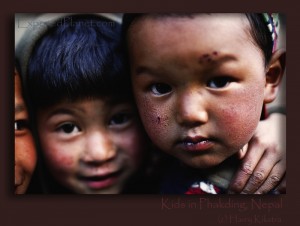
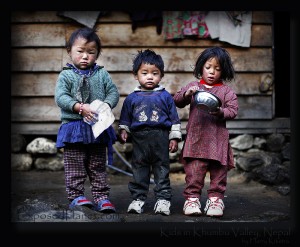
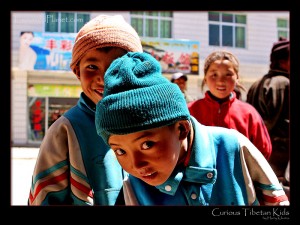
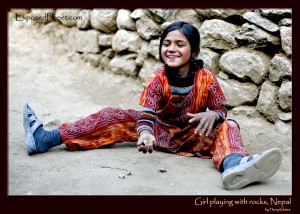
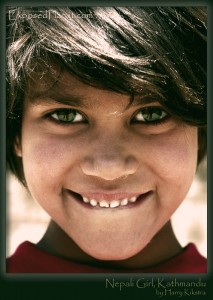
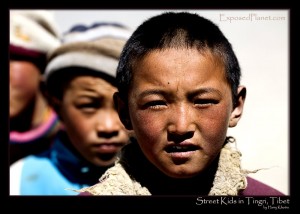
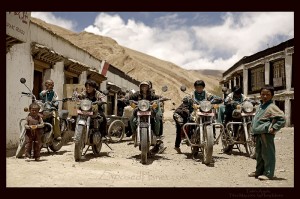
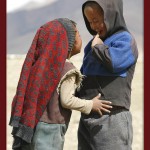
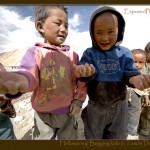
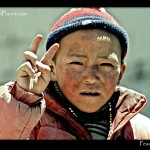
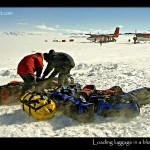






nice tips, i’ll use it to improve my photos
Thanks Andrian, hope you can share the results somewhere.